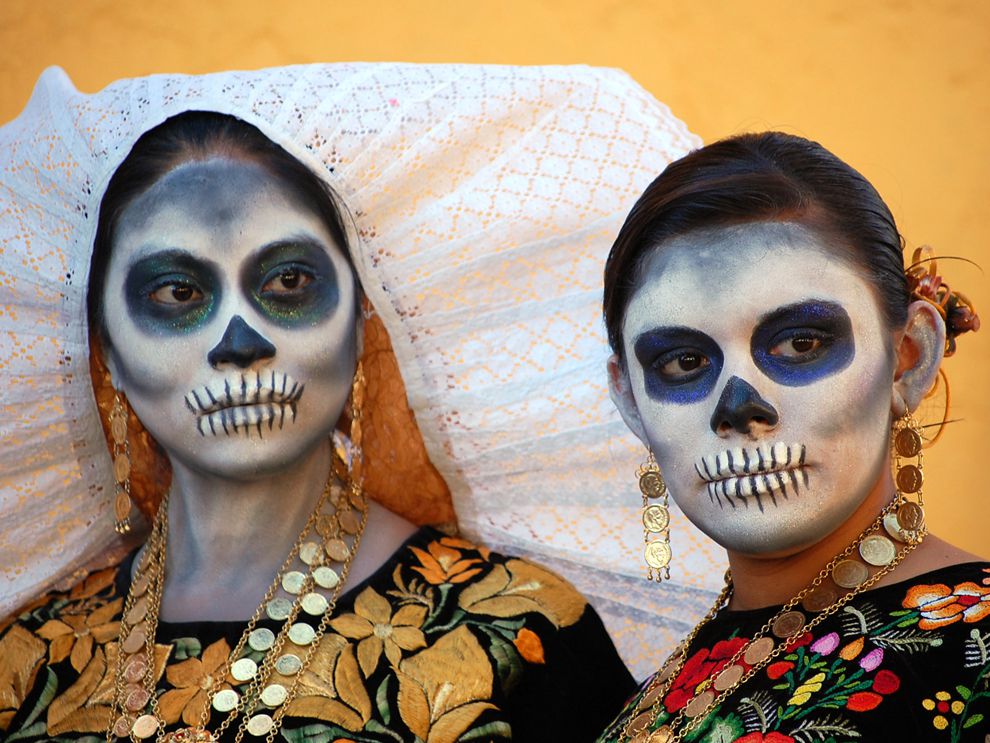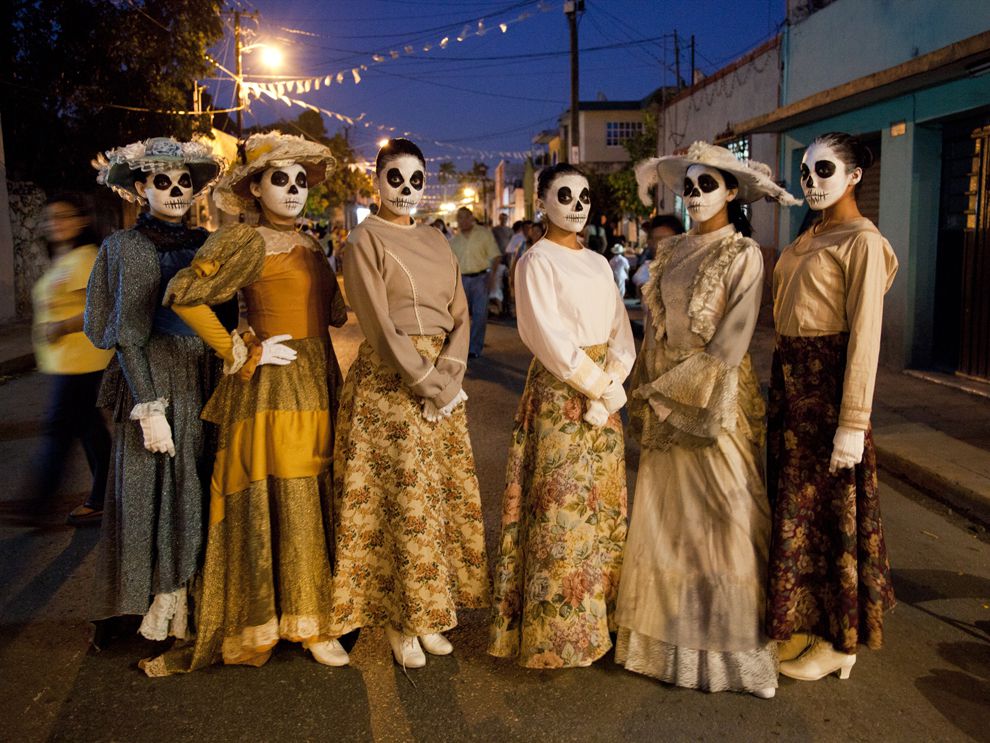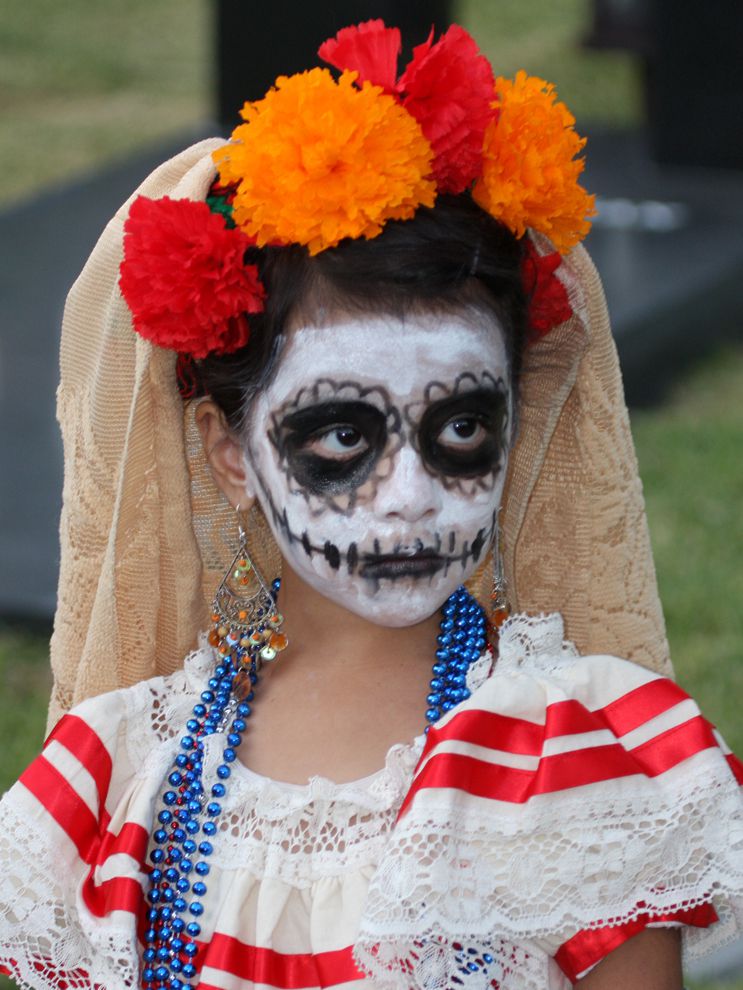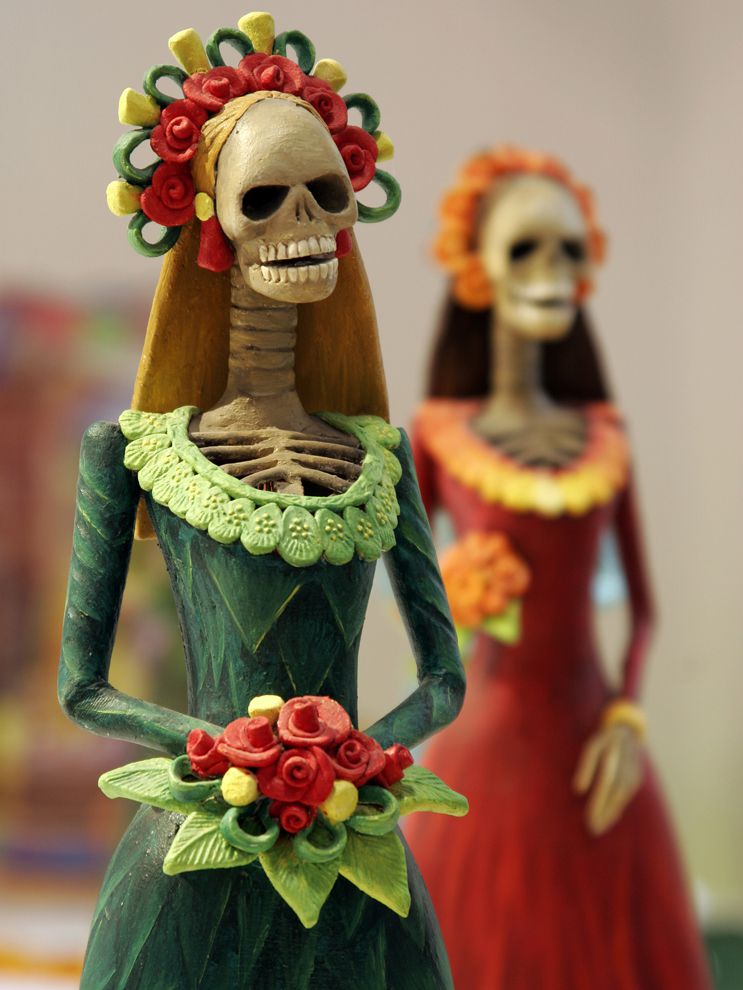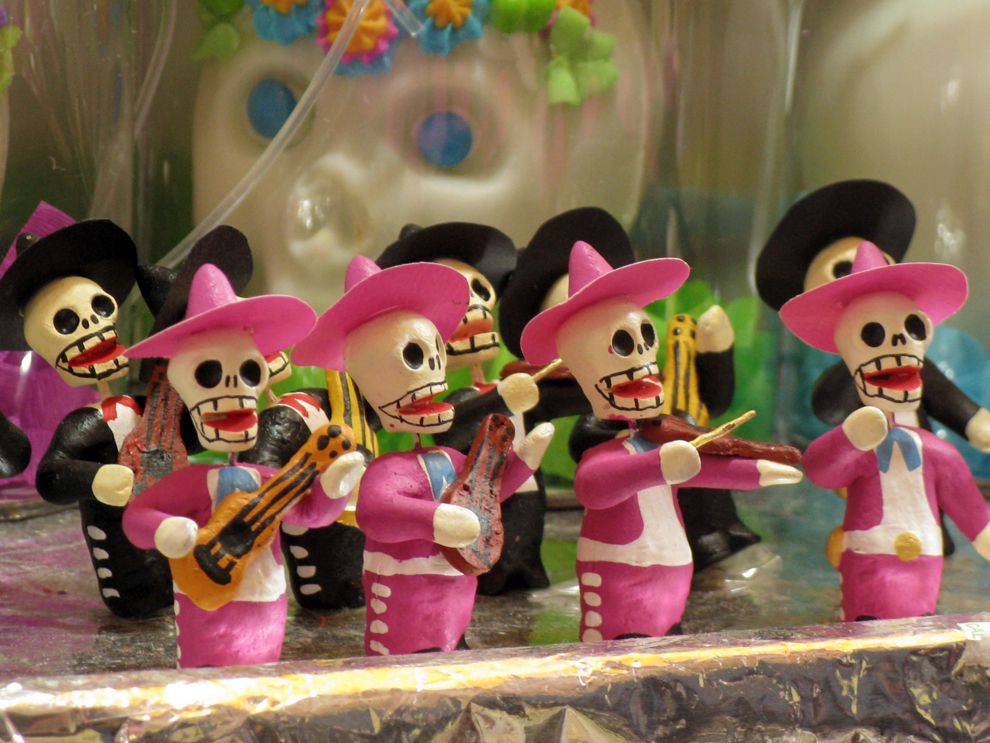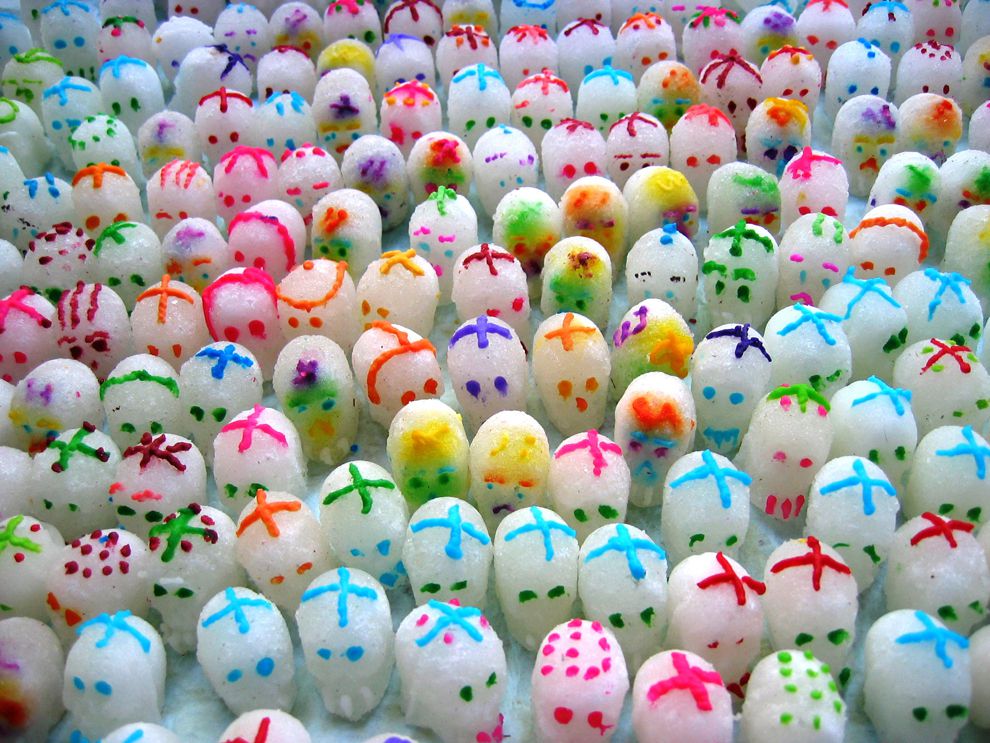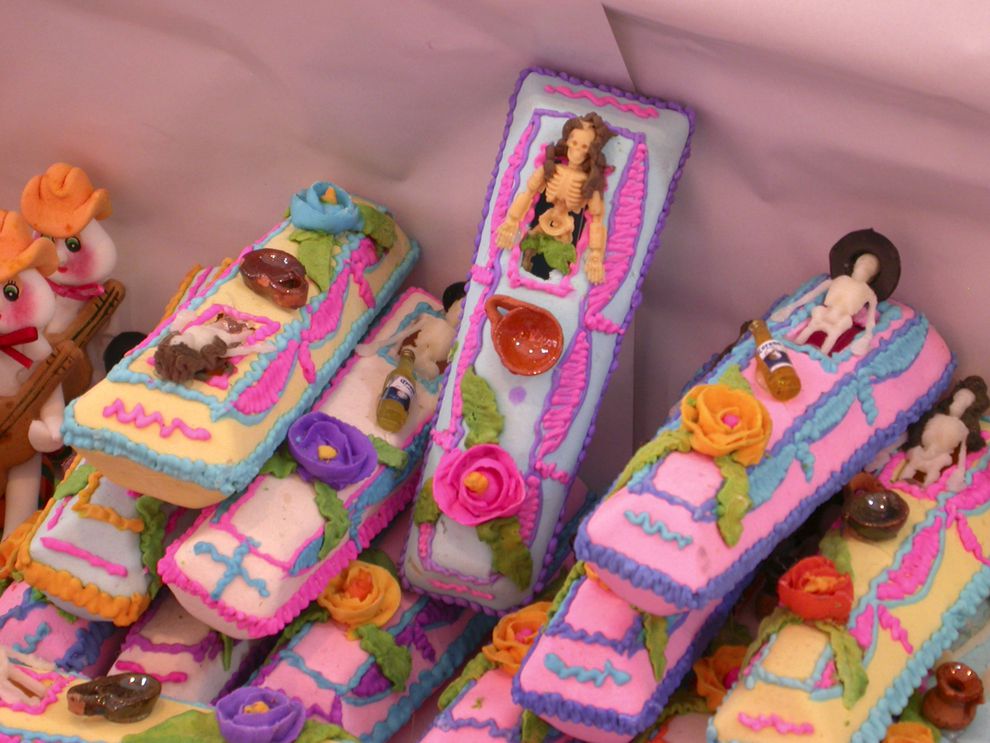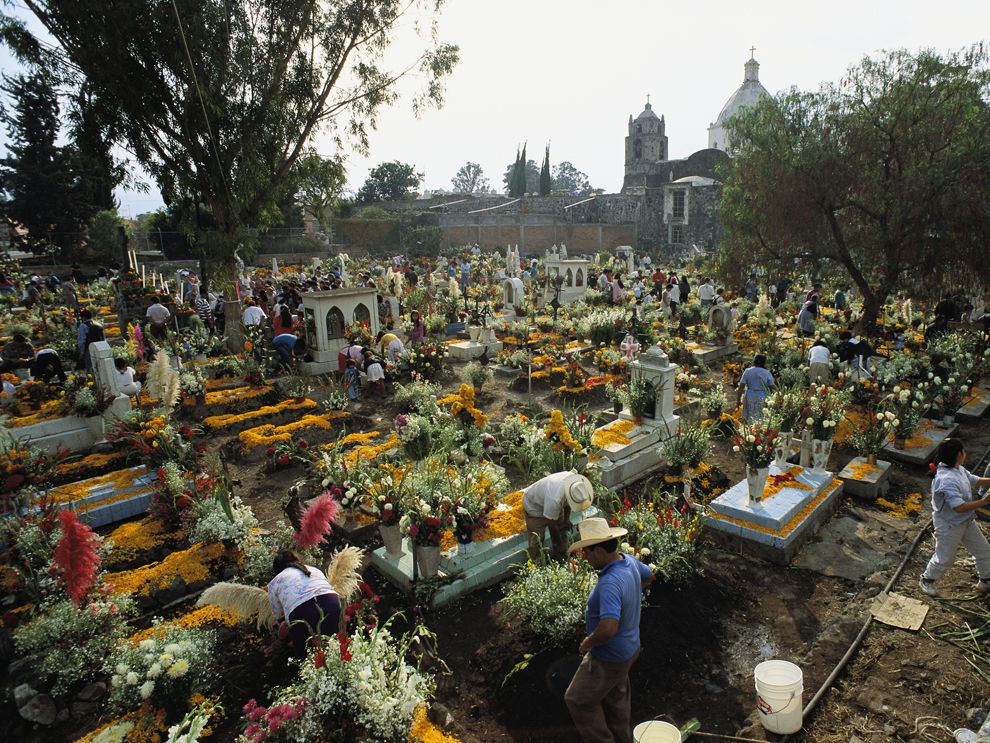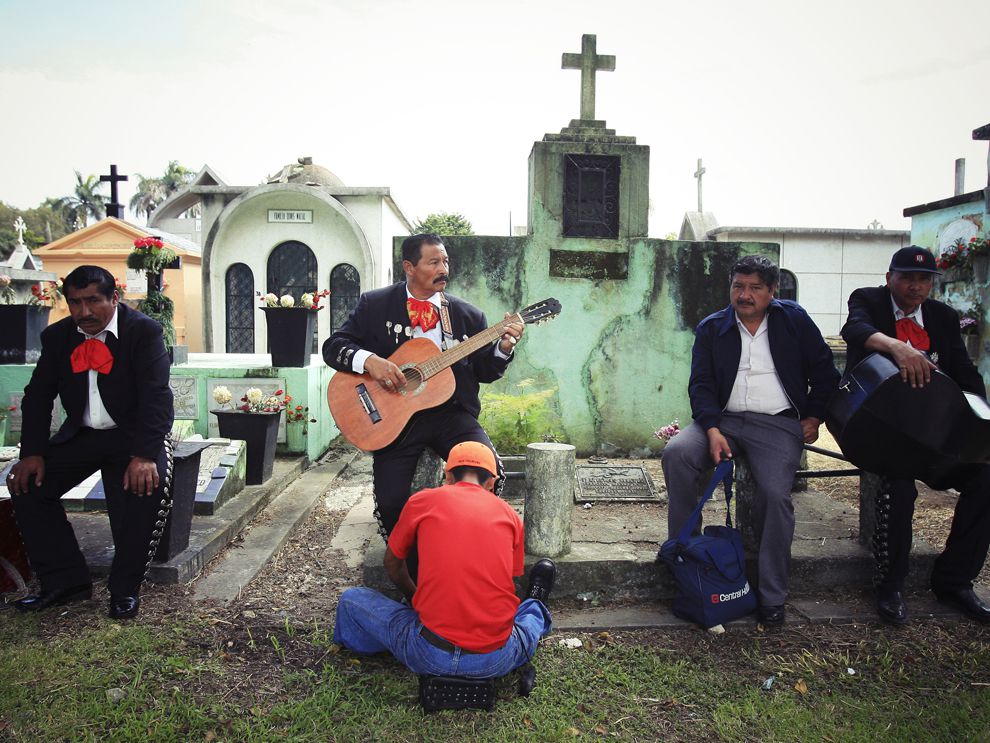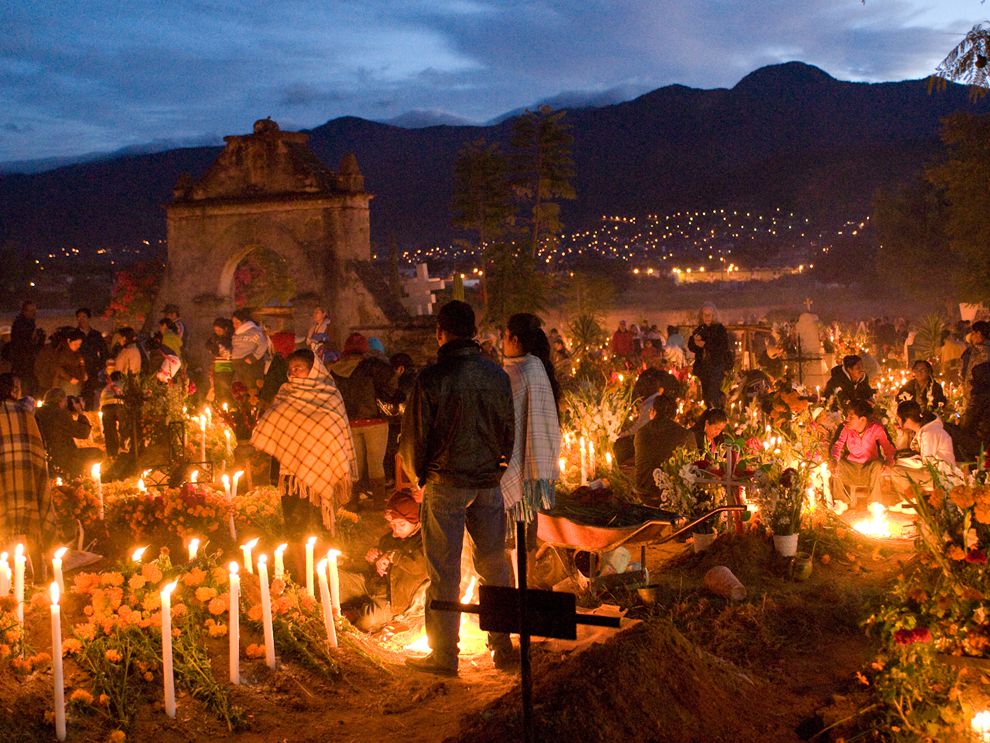Lively Mexican Holiday Honors The Dead
Photograph by Laura Hasbun, MyShot
Dia de los Muertos—the Day of the Dead—is a holiday celebrated on November 1. Although marked throughout Latin America, Dia de los Muertos is most strongly associated with Mexico, where the tradition originated.
Dia de los Muertos honors the dead with festivals and lively celebrations, a typically Latin American custom that combines indigenous Aztec ritual with Catholicism, brought to the region by Spanish conquistadores. (Dia de los Muertos is celebrated on All Saints Day and All Souls Day, minor holidays in the Catholic calendar.)
Photograph by Nelda Costner, MyShot
Assured that the dead would be insulted by mourning or sadness, Dia de los Muertos celebrates the lives of the deceased with food, drink, parties, and activities the dead enjoyed in life. Dia de los Muertos recognizes death as a natural part of the human experience, a continuum with birth, childhood, and growing up to become a contributing member of the community. On Dia de los Muertos, the dead are also a part of the community, awakened from their eternal sleep to share celebrations with their loved ones.
The most familiar symbol of Dia de los Muertos may be the calacas and calaveras(skeletons and skulls), which appear everywhere during the holiday: in candied sweets, as parade masks, as dolls. Calacas and calaveras are almost always portrayed as enjoying life, often in fancy clothes and entertaining situations.
Use the questions in the following tab (Questions) to inspire discussion about Dia de los Muertos, Latin America, colonialism, and culture.
Photograph by Ellen Fields, MyShot
Photograph by Michael Allen, MyShot
Questions
Dia de los Muertos is celebrated throughout Latin America, including South America (Brazilians call the festival Finados) and the Caribbean. In the United States and Canada, the tradition exists only in areas with a large Latin American population, such as Los Angeles, California, or Vancouver, British Columbia, Canada. Dia de los Muertos predates the independence of Mexico, the U.S., and Canada. Why do you think this is not a widely celebrated American or Canadian holiday?
Answers will vary! Consider the region's history:
• Dia de los Muertos has its origins in Aztec traditions honoring the dead. The Aztec Empire's influence extended throughout present-day Mexico and Central America, while few Native Americans of the present-day U.S. shared Aztec traditions. They would be unlikely to adopt Dia de los Muertos rituals.
• Latin America was largely colonized by Catholics, while northern North America was largely colonized by Protestants. Though both Christian, these traditions have different religious calendars, and honor saints and holy days in different ways. All Saints Day and All Souls Day are more important in the Catholic calendar than the Protestant calendar.
• Latin America was largely colonized by Spain and Portugal, while the U.S. and Canada were colonized mostly by the British and French. National traditions influence religious celebrations. Even though both Spain and France were Catholic nations, for instance, Spanish citizens celebrated All Saints Day with family reunions, feasts, and festivals. Few French citizens marked the day at all.
• Protestant British and Catholic Spanish explorers had wildly different approaches to the native populations they colonized. Catholic missionaries often incorporated native influences into their religious teachings. They adapted Aztec traditions with All Saints Day to create Dia de los Muertos, where elements of both celebrations are retained. Spanish explorers were also more likely to marry indigenous people, creating a hybrid (mestizo) culture where such cultural adaptation is a way of life.
Photograph by Tomas Castelazo, MyShot
Photograph by Alejandra Gonzalez Ruiz, MyShot
In some of these photos, masks and other decorations are only half-decorated withcalacas and calaveras. Why?
Answers will vary! Consider the philosophy of the festival:
• Dia de los Muertos celebrates death as a part of the human experience: Every living thing will eventually die. Every human being, no matter how beautiful or well-dressed, will eventually be exposed as nothing more than a skeleton and skull. The half-decorated calacas and calaveras recognize this duality.
• The dead are a part of the community, participating in the same way they did in life. Although their flesh may have disappeared, their cultural associations have not. Skeletons representing firefighters may still ride in a fire truck, for instance, or a calaca of a vaquero (cowboy) may still ride a horse.
Photograph by Roberta Garza, MyShot
Photograph by George Olney, MyShot
In many parts of Mexico, participants in Dia de los Muertos festivities wear shells or other noisemakers on their clothing and jewelry. Why?
Answers will vary! Consider the culture of the festival:
• The dead are a part of the community, but invisible to the living. Shells and noisemakers will wake the dead from their sleep, and keep them close during the festivities.
• Many of the dead were musicians or enjoyed music and dancing.
• Dia de los Muertos is a celebration, and music is an important part of the joyous atmosphere.
Photograph by Sisse Brimberg
Photograph by Aaron Ganz, MyShot
Fast Facts
- Family members often clean and decorate the graves of loved ones on Dia de los Muertos.
- In addition to celebrations, the dead are honored on Dia de los Muertos withofrendas—small, personal altars honoring one person. Ofrendas often have flowers, candles, food, drinks, photos, and personal mementos of the person being remembered.
- Dia de los Muertos is actually Dias de los Muertos—the holiday is spread over two days. November 1 is Dia de los Inocentes, honoring children who have died. Graves are decorated with white orchids and baby's breath. November 2 is Dia de los Muertos, honoring adults, whose graves are decorated with bright orange marigolds.
Photograph by Tom Dietrich, MyShot
Tags:
Replies to This Discussion
-
Permalink Reply by MARGARIDA MARIA MADRUGA on October 30, 2018 at 8:30am
-
The traditions are very strange.
At last the dead are remembered. -
Have questions?
Need help? Visit our Support Group for help from our friendly Admins and members!
Have you?
Donations & Sponsorship
Connect
Visit The Temple
on Facebook:
Blog Posts
Yall'dabaoth: Genesis
Posted by Heth Lee (李) on October 27, 2025 at 2:00pm 0 Comments 0 Likes
Channeled Angelic Wisdom of the Jewels of Truth Series on Divine Inheritance, Totality of the Self, & Paradoxical Actions by Faith
Posted by Atrayo on October 26, 2025 at 10:57am 0 Comments 1 Like
The North Star
Posted by Heth Lee (李) on October 24, 2025 at 8:00am 0 Comments 0 Likes
Yall'dabaoth: Exodus
Posted by Heth Lee (李) on October 22, 2025 at 5:00am 0 Comments 0 Likes
The Sith Lord
Posted by Heth Lee (李) on October 20, 2025 at 11:00pm 0 Comments 0 Likes
The Weapon Master
Posted by Heth Lee (李) on October 18, 2025 at 11:30pm 0 Comments 0 Likes
Channeled Angelic Wisdom of the Jewels of Truth Series on Heart, Pure Heart, and the Immaculate Conception
Posted by Atrayo on October 16, 2025 at 5:39am 0 Comments 1 Like
Penultimate
Posted by Heth Lee (李) on October 10, 2025 at 12:00am 0 Comments 0 Likes
HOW ABOUT A GAME OF CARDS ?
Posted by FRA .*. DISTURABO .*. on October 9, 2025 at 4:30am 0 Comments 0 Likes
THE GOLDEN DAWN OF A NEW DAY WAS YESTERDAY
Posted by FRA .*. DISTURABO .*. on October 7, 2025 at 9:14pm 0 Comments 1 Like
DMV
Posted by Heth Lee (李) on October 4, 2025 at 1:00pm 6 Comments 0 Likes
The Pale Horse
Posted by Heth Lee (李) on September 30, 2025 at 6:30pm 0 Comments 0 Likes
PRINCIPALITIES & POWERS - DOMINIONS & THRONES - 36 DECAN MNEMONICS
Posted by FRA .*. DISTURABO .*. on September 27, 2025 at 11:00pm 0 Comments 1 Like
390 - LIBER 220 - 1:57
Posted by FRA .*. DISTURABO .*. on September 27, 2025 at 7:35pm 0 Comments 0 Likes
PHOENICIAN / VALUES
Posted by FRA .*. DISTURABO .*. on September 26, 2025 at 4:05pm 0 Comments 1 Like
The Atlantean
Posted by Heth Lee (李) on September 25, 2025 at 6:30am 0 Comments 0 Likes
Channeled Angelic Wisdom of the Jewels of Truth Series on Astral Holy Light & Sound and Binary Dominion Inversion
Posted by Atrayo on September 25, 2025 at 1:05am 0 Comments 1 Like
Heth Lee: Exodus
Posted by Heth Lee (李) on September 20, 2025 at 7:00am 3 Comments 0 Likes
RUDOLF STEINER 1917 QUOTE & LINKS on >The Fall of the Spirits of Darkness
Posted by FRA .*. DISTURABO .*. on September 17, 2025 at 8:00pm 0 Comments 1 Like
Boy Wonder
Posted by Heth Lee (李) on September 17, 2025 at 4:30am 0 Comments 0 Likes
NOVEMBER AWARENESS
Videos
© 2025 Created by Bryan
Powered by
![]()

